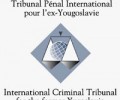Acquittal of former Chiefs of State Security Service Jovica Stanišić and Frankao Simatović
 The Trial Chamber of the International Criminal Tribunal for the former Yugoslavia (ICTY) has handed down a judgment finding Jovica Stanišić and Franko Simatović, leading Serbian State Security (SDB) officials, not guilty on all counts of the indictment which charged them with the crimes that the units under the control of the SDB committed in Croatia and Bosnia and Herzegovina (BiH) between 1991 and 1995. The Humanitarian Law Center (HLC) considers this ICTY judgment to be a trivialisation of the role of Simatović and Stanišić – and consequently, of the role of the then leadership of Serbia in the wars in Croatia and BiH.
The Trial Chamber of the International Criminal Tribunal for the former Yugoslavia (ICTY) has handed down a judgment finding Jovica Stanišić and Franko Simatović, leading Serbian State Security (SDB) officials, not guilty on all counts of the indictment which charged them with the crimes that the units under the control of the SDB committed in Croatia and Bosnia and Herzegovina (BiH) between 1991 and 1995. The Humanitarian Law Center (HLC) considers this ICTY judgment to be a trivialisation of the role of Simatović and Stanišić – and consequently, of the role of the then leadership of Serbia in the wars in Croatia and BiH.
Jovica Stanišić, former head of the SDB, and Franko Simatović, commander of the SDB’s Special Operations Unit (JSO), were accused of participating in a joint criminal enterprise, the objective of which was the forcible and permanent removal of Croats from certain areas in Croatia and of Bosnian Muslims and Croats from certain areas in BiH – that is, of the “ethnic cleansing” of large, Serb-controlled areas of Croatia and BiH.
ICTY Trial Chamber Summary Conclusions
I In the areas referred to in the indictment (Serb-controlled territories in Croatia and the municipalities of Doboj, Bosanski Šamac, Bijeljina, Zvornik, Sanski Most and Trnovo), the non-Serb population was the target of widespread attacks. These attacks included the commission of the crimes of deportation, forcible transfer and killings, carried out on discriminatory grounds, which constitute crimes against humanity.
II The crimes were committed by members of the Serbian Volunteer Guard (SDG), Special Operations Unit (JSO), Scorpions, Militia of the Serbian Autonomous Region of Krajina (SAO Krajina) and other armed formations.
III During the indictment period, Stanišić and Simatović directed and organised the formation, financing, logistical and other forms of support for the JSO, and organised its deployment in several operations in Croatia and BiH. Also, Stanišić and Simatović, in co-operation with Milan Martić, former President of the Republic of Serbian Krajina (RSK), directed and organised the formation of the Militia of the Serbian Autonomous Region of Krajina, and later the financing and logistical support for the Militia.
IV With regard to the ties that existed between Simatović and Stanišić and other units who, according to the indictment, were controlled by the SDB (SDG, Scorpions and others), the Trial Chamber held that from the evidence presented it was not possible to conclude that Stanišić and Simatović had formed these units or that they were in command of them, and that the evidence indicating that Stanišić and Simatović supported these units was limited.
V From the evidence presented by the Prosecution, the Trial Chamber was unable to conclude beyond a reasonable doubt that Stanišić and Simatović shared the intent of a joint criminal enterprise to ethnically cleanse particular territories in Croatia and BiH.
- The Trial Chamber found that the JSO committed crimes only during the operations in Doboj and Bosanski Šamac, and that although Stanišić did indeed organize JSO involvement in these operations, the unit was not under his direct command.
- Stanišić’s role in the formation, financing and support of the JSO and its deployment in operations during which crimes were committed (Doboj and Bosanski Šamac) was insufficient to prove beyond a reasonable doubt that Stanišić intended to contribute by his actions to the common criminal purpose of forcibly and permanently removing the non-Serb population; rather, it could be reasonably inferred that his actions were directed towards establishing and maintaining Serb control over particular territories in Croatia and BiH.
- In providing support to the Militia of the SAO Krajina and cooperating with Milan Martić, of whose intent to forcibly remove Croats from the areas controlled by Croatian Serbs he must have been aware, Stanišić took the risk that the SAO Krajina Militia would commit crimes against non-Serbs. However, the knowledge and acceptance of such a risk was insufficient to incur Stanišić’s liability for participating in a joint criminal enterprise.
- Even though Simatović was at least aware of Martić’s intent to forcibly remove Croatian civilians from the village of Lovinac in June 1991, and was present at a meeting prior to, and a celebration following the fall of Vukovar, these activities of Simatović were not sufficient to prove his participation in the joint criminal enterprise. Other operations in which Simatović was involved were military in nature and no evidence was presented during the trial indicating that any crimes had been committed during these operations.
VI Nor did the Chamber find Stanišić and Simatović guilty on the basis of their „command responsibility“. According to the conclusions of the Trial Chamber, the Prosecution did not prove beyond reasonable doubt that Stanišić and Simatović planned or ordered any of the crimes charged in the indictment. The Chamber further held that their actions related to the formation and financing of the JSO and providing assistance to it were not directed towards the commission of crimes; rather, they allowed for the reasonable conclusion that the assistance was directed towards establishing and maintaining military control over specific areas.
The HLC points out that by this judgment the ICTY has denied post-Yugoslav societies the truth about the actual role of the SDB and the then Serbian leadership in the conflicts in Croatia and BiH. As a result of the heavy burden of proof imposed on the Prosecution to prove participation in a joint criminal enterprise, i.e. “command responsibility”, Stanišić and Simatović were cleared of the crimes committed, despite the pivotal role they played in the formation and command of the units which committed these crimes. Thus, for example, the Trial Chamber depicted the role of Stanišić and Simatović – and consequently of the SDB also – as crucial for the formation and provision of durable support to the SAO Krajina militia, who carried out “ethnic cleansing“ in Croatia in 1991. However, because of the high standards of proof adopted, the Trial Chamber did not find Stanišić at all responsible for the consequences of this cleansing, even though he was aware of the intent to carry out the „ethnic cleansing“.
On the proceedings
The presentation of evidence lasted four years, from 2008 to 2012. Due to Stanišić’s supposedly ill-health, the trial was adjourned on numerous occasions. The Trial Chamber, composed of Dutch Judge Alphons Orie (presiding), Judge Michele Picard from France and Judge Elizabeth Gwaunza from Zimbabwe, heard 95 witnesses – 62 for the prosecution, 19 witnesses in defence of Stanišić and 14 in defence of Simatović. Nearly 5,000 exhibits were admitted in evidence.
The trial was marked by frequent occasions when the public was not allowed to observe the presentation of evidence. This interdiction was in order to protect the safety of witnesses, but also because the Republic of Serbia requested that certain documents, and the identities and testimonies of a certain number of witnesses should not be disclosed to the public for alleged reasons of national security.







